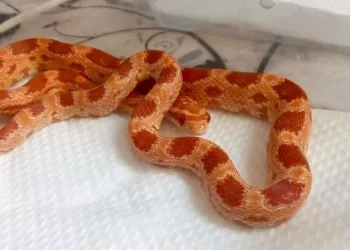When it comes to the fascinating world of tortoises, few creatures are as iconic and intriguing as the Aldabra tortoise and the Galápagos tortoise. These magnificent reptiles have become symbols of conservation and resilience, capturing the hearts of animal lovers and researchers alike. While both species share similarities, they are also distinct in numerous ways, ranging from their physical characteristics and habitats to their behaviors and conservation statuses. In this article, we will delve into the captivating lives of these two tortoise species, exploring their differences and similarities, and highlighting their importance in the ecosystems they inhabit.
An Overview of Aldabra and Galápagos Tortoises
Before we dive into the differences, let’s take a closer look at these remarkable reptiles.
Aldabra Tortoise: The Gentle Giant of the Seychelles
The Aldabra tortoise (Aldabrachelys gigantea) is one of the largest tortoise species in the world and is native to the Aldabra Atoll in the Seychelles, a group of islands located in the Indian Ocean. These tortoises are well-known for their impressive size, with some individuals weighing over 500 pounds and reaching lengths of up to four feet.
Habitat and Environment
Aldabra Atoll is a UNESCO World Heritage Site and is characterized by its unique ecosystem, which includes a mix of coastal and terrestrial habitats. The atoll consists of several islands and is surrounded by shallow lagoons and coral reefs. The environment supports a variety of vegetation, including grasses, shrubs, and trees, which serve as food for the tortoises.
Physical Characteristics
Aldabra tortoises have a distinct dome-shaped shell that is relatively smooth and can range in color from light brown to dark gray. Their legs are thick and sturdy, allowing them to navigate their sandy and rocky habitats with ease. Unlike some other tortoise species, Aldabra tortoises do not have a hinge on their shell, making them less flexible.
Behavior and Diet
These tortoises are primarily herbivorous, feeding on a wide variety of plant materials, including leaves, fruits, and flowers. They play a crucial role in their ecosystem by dispersing seeds and helping to maintain the balance of their habitat. Aldabra tortoises are also known for their gentle nature, often displaying social behaviors, such as basking together or engaging in mating rituals.
Galápagos Tortoise: The Icon of the Galápagos Islands
The Galápagos tortoise (Chelonoidis nigra) is another colossal tortoise species, found exclusively on the Galápagos Islands, an archipelago situated in the Pacific Ocean, off the coast of Ecuador. The Galápagos Islands are famous for their diverse ecosystems and unique wildlife, which played a significant role in Charles Darwin’s theory of evolution by natural selection.
Habitat and Environment
The Galápagos Islands consist of 13 main islands, several smaller islands, and numerous islets, each with its own distinct environment. These tortoises inhabit a variety of habitats, including lush highland areas, arid lowlands, and coastal regions. The islands are home to various plant species, including cacti, grasses, and shrubs, which serve as food sources for the tortoises.
Physical Characteristics
Galápagos tortoises have a more variable shell shape compared to their Aldabra counterparts. Their shells can be either dome-shaped or saddle-shaped, depending on the specific island they inhabit. The saddle-shaped tortoises have longer necks, allowing them to reach higher vegetation, while the dome-shaped ones are found in areas with low-growing plants. Their coloration can vary as well, ranging from dark brown to light tan.
Behavior and Diet
Like the Aldabra tortoise, the Galápagos tortoise is primarily herbivorous. Their diet includes a range of plant materials, such as grasses, leaves, and fruits. They are known for their slow, deliberate movements and can live for over a century, making them one of the longest-living land animals on the planet.
Key Differences Between Aldabra and Galápagos Tortoises
While both the Aldabra and Galápagos tortoises share some similarities, they also possess several distinct differences that set them apart. Here are some of the most notable contrasts between these two fascinating species.
1. Geographical Distribution
The most obvious difference between these two tortoise species is their geographical distribution. The Aldabra tortoise is native to the Aldabra Atoll in the Seychelles, while the Galápagos tortoise is found exclusively on the Galápagos Islands. This separation has led to distinct evolutionary paths and adaptations to their respective environments.
2. Physical Appearance
Shell Shape and Size
As mentioned earlier, Aldabra tortoises typically have a dome-shaped shell, while Galápagos tortoises can exhibit a range of shell shapes, including saddle-shaped variants. In terms of size, Aldabra tortoises are generally larger than Galápagos tortoises, with the former weighing up to 500 pounds or more, whereas the largest Galápagos tortoises typically weigh around 400 pounds.
Coloration
The coloration of their shells also differs. Aldabra tortoises usually have a more uniform coloration, while Galápagos tortoises can display variations in color depending on their habitat.
3. Lifespan and Reproductive Behavior
Both tortoise species are known for their impressive lifespans, often exceeding 100 years. However, their reproductive behaviors differ.
Aldabra Tortoises
Aldabra tortoises have a relatively low reproductive rate, with females laying around 10 to 15 eggs per clutch. They typically nest in sandy areas, and the eggs incubate for approximately 90 days before hatching.
Galápagos Tortoises
In contrast, Galápagos tortoises can lay up to 16 eggs in a single clutch, and nesting behavior varies by island. The eggs of Galápagos tortoises also take about 120 days to hatch. Their nesting sites can be found in both sandy and rocky areas, showcasing their adaptability to different environments.
4. Behavioral Differences
While both species are generally docile, there are behavioral differences that can be observed.
Social Interaction
Aldabra tortoises tend to display more social behaviors, often seen basking together or engaging in group activities. Galápagos tortoises, on the other hand, can be more solitary, especially in areas where food is scarce.
Foraging Habits
Aldabra tortoises are known for their varied diet and ability to forage over large distances. In contrast, Galápagos tortoises may display more specialized foraging behaviors based on the specific plants available in their habitats.
5. Conservation Status
Both tortoise species face significant threats due to habitat loss, invasive species, and human activities.
Aldabra Tortoise Conservation
The Aldabra tortoise is currently classified as “Vulnerable” by the International Union for Conservation of Nature (IUCN). Conservation efforts have been implemented to protect their habitat and maintain the population on Aldabra Atoll. These efforts include monitoring populations, controlling invasive species, and promoting eco-tourism to raise awareness.
Galápagos Tortoise Conservation
The Galápagos tortoise has a more precarious conservation status, classified as “Critically Endangered.” The introduction of invasive species, such as rats, goats, and pigs, has severely impacted their populations. Conservation programs in the Galápagos Islands focus on habitat restoration, invasive species control, and breeding programs to increase their numbers.
The Ecological Importance of Aldabra and Galápagos Tortoises
Both the Aldabra and Galápagos tortoises play vital roles in their respective ecosystems. As herbivores, they contribute to the health of their habitats by aiding in plant growth and seed dispersal. Their grazing habits can help maintain the balance of vegetation, preventing overgrowth and promoting biodiversity.
Seed Dispersal
Both species of tortoises are significant seed dispersers. By consuming fruits and plants, they aid in the dispersal of seeds, which is crucial for maintaining plant populations and promoting genetic diversity. This, in turn, supports various animal species that rely on these plants for food and habitat.
Biodiversity Indicators
The presence of healthy tortoise populations is often an indicator of a robust ecosystem. The decline of these tortoises can signal ecological issues, such as habitat degradation and the introduction of invasive species. Protecting these tortoises not only ensures their survival but also the well-being of their entire ecosystems.
Fascinating Facts About Aldabra and Galápagos Tortoises
To add to the richness of our discussion, let’s highlight some fascinating facts about these two remarkable tortoise species.
Aldabra Tortoise Facts
Weighty Giants: Aldabra tortoises can weigh between 150 and 550 pounds, making them one of the largest tortoise species on the planet.
Long-Lived: These tortoises can live for over 150 years in the wild, with some individuals potentially reaching up to 200 years of age.
Unique Adaptations: Aldabra tortoises have evolved unique adaptations to survive in their specific environment, including the ability to retain water during droughts.
Galápagos Tortoise Facts
Multiple Subspecies: There are 11 recognized subspecies of Galápagos tortoises, each adapted to different islands and environments within the archipelago.
Slow and Steady: Galápagos tortoises move at a leisurely pace, averaging about 0.2 miles per hour. Despite their slow movements, they can travel considerable distances in search of food.
Darwin’s Inspiration: The Galápagos tortoise played a crucial role in Charles Darwin’s studies of evolution, as he observed how different environments led to variations in shell shape and size among the tortoises.
Conclusion
In summary, the Aldabra and Galápagos tortoises are not just remarkable creatures; they are vital guardians of their ecosystems. Through their herbivorous diets and unique adaptations, they maintain the balance of their environments and contribute to the richness of biodiversity. Despite facing significant threats, ongoing conservation efforts offer hope for their survival.
As we reflect on the differences and similarities between these two magnificent tortoise species, we are reminded of the importance of protecting their habitats and preserving their populations for future generations. The Aldabra tortoise and the Galápagos tortoise stand as living reminders of nature’s resilience and the intricate web of life that connects us all. By ensuring their survival, we honor the legacy of these gentle giants and the ecosystems they inhabit, inspiring future generations to appreciate and protect our planet’s remarkable biodiversity.
Related Topics:


























